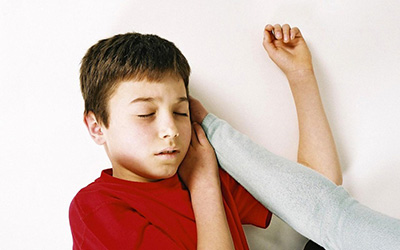
Source: www.locallyhealthy.co.uk
Seeing a child having an episode of febrile seizure can be one of the most traumatising experiences for most parents. Eyes bulging, lips cyanosed (having a bluish discoloration of the skin caused by a deficiency of oxygen in the blood), legs stiffened and convulsing; these are amongst the observable signs in children with febrile seizure.
What is a febrile seizure?
A Febrile seizure is not a specific disorder. It is actually a condition where a child experiences seizure due to high body temperature and fever not due to disease/ infection of the brain or metabolic derangement. Thus, febrile seizure is not equivalent to a seizure disorder or epilepsy. It is known as ‘sawan demam’ or ‘demam sawan’ in Bahasa Malaysia.
Who can get it?
Children between 3 months to 6 years old can theoretically experience febrile seizure. However, it commonly afflicts children between 6 months to 5 years of age.
What should you do when a child is having a seizure?
Do not panic!
- This is easier said than done! Seeing someone seizing can leave the calmest person stupefied!
- In spite of that, try your best not to panic so you would be able to act accordingly.
Move your child to a safe area
- Ensure your child is in a safe environment
- Remove objects that may cause hazard ie. keep child away from objects that may be accidentally kicked and fall onto the child
Turn your child onto his left side in the recovery position
- This is to prevent the child from choking and aspirating if there is a foreign object in the oral cavity
- In case of aspiration, foreign objects tend to lodge in the right main bronchus (passage of airway in the respiratory tract ) compared to the left. Hence, it is not recommended to place the child onto his right side.
- If you can clearly see a foreign object in the oral cavity, you may attempt to remove it by a swift finger movement. If this is difficult, do not forcefully push your fingers or put another object into the oral cavity of a convulsing child.
- Do not force the child to have a drink of water
Observe the duration and pattern of the seizure
- Febrile seizures commonly last for a few minutes
- Bring the child to the nearest clinic for evaluation after the seizure ceased
- If the seizure lasts more than 5 minutes, immediately seek medical attention
- Observing the duration and pattern of the seizure can aid the doctors in making an accurate diagnosis
- Even though febrile seizure is not a life-threatening condition, doctors have to exclude other lethal causes of seizures such as meningitis, hypoglycaemia (low blood sugar) and other metabolic derangements.
Can febrile seizure recur and can it progress into epilepsy?
Yes. Febrile seizure can recur. Amongst the risk factors include family history of febrile seizures and age less than 1 year-old during the first febrile seizure. Almost half of the cases of recurrence happen within sixth months from the first episode.
Febrile seizure does not cause epilepsy. Nonetheless, the study shows 2-7% of these children are diagnosed with epilepsy later in life. In these cases, the majority of the children is affected by other conditions such as developmental retardation, central nervous system disorder or a family history of epilepsy.
Can febrile seizure be prevented?
There is no evidence that anti-pyretic ( a medication that reduce fever) and anti-epileptics ( a medication used to treat or reduce seizure) can prevent febrile seizures. Even so, anti-pyretic can help a child with high fever feel more comfortable.
It is crucial for parents to know that febrile seizure is not a serious condition and it has a very good prognosis especially in children without developmental and central nervous system disorders.
Alya Hamzah is a paediatric medical officer who is currently working in Sabah and is preparing for her post-graduation examination in paediatrics. She strongly believes that the road towards excellence in healthcare should be paved by doctors and patients together. Visit ‘The Team’ page to know more about Dr. Alya Hamzah. This article was translated by Azizul Ismie Mohd Puad from https://www.mmgazette.com/apakah-sawan-demam-dr-alya-hamzah/
References:
- Chang YC, Guo NW, Wang ST, et al; Working memory of school – aged children with a history of febrile seizures, a population study, Neurology57:37-42, 2001.
- Menkes JH, Sankar R, Maria BL; editors: Paroxysmal disorders in Menkes JH, Sarnat HB, editors: Child Neurology, ed 7, Philadelphia, 2006, Lippincot Williams and Wilkins, pp920-992.
[This article belongs to The Malaysian Medical Gazette. Any republication (online or offline) without written permission from The Malaysian Medical Gazette is prohibited.]
